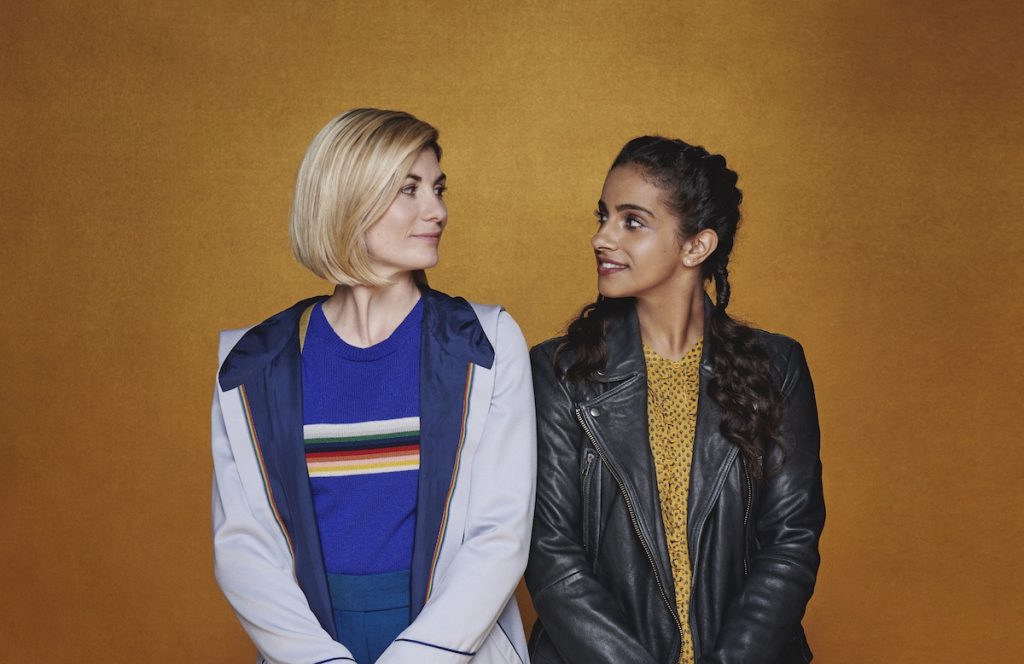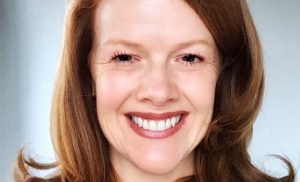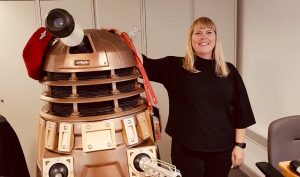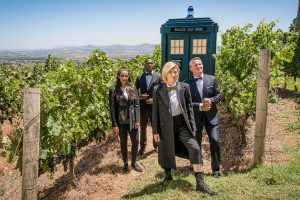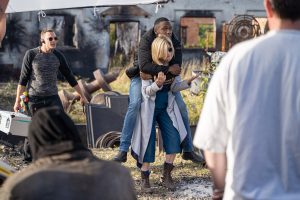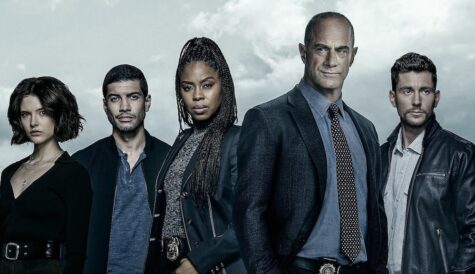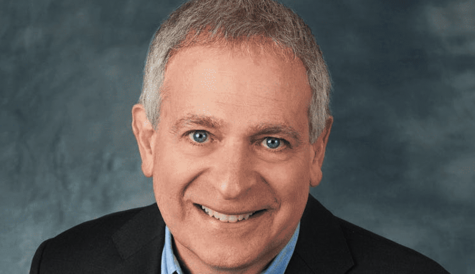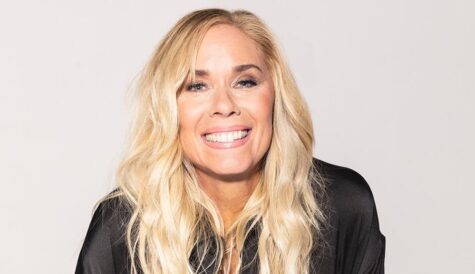Exclusive: The women behind ‘Doctor Who’ on aliens, travel & equality
TBI marks International Women’s Day with the first in a series of interviews over the coming days with leading women in the TV industry. Here, Mark Layton talks to Nikki Wilson, Sheena Bucktowonsing and Ceres Doyle, key production talent from iconic British sci-fi Doctor Who.
No show does reinvention quite like Doctor Who. For almost 60 years, the BBC Studios-produced British sci-fi series has followed the adventures of The Doctor, an enigmatic and heroic alien who can travel anywhere in time and space and be portrayed by anyone.
The show first debuted on BBC One in 1963 and ran for 26 seasons until 1989. A one-off backdoor pilot attempt aired in 1996, before the show was finally brought back in 2005, and it has remained on screens since, with season 13 of the revived era due to air later this year.
A masterstroke idea introduced early in the show’s run, which has contributed to its incredible longevity, means The Doctor can be periodically reborn with a new appearance and a new leading actor in the role, to go on opposing evil and fighting monsters indefinitely.
This unique storytelling trait means that since Doctor Who first debuted on BBC One in 1963, there have been 13 actors in the leading role, but it was not until 2018 that The Doctor was played by a woman, the incumbent Jodie Whittaker.
“That has been one of the joys of the past three years, seeing the impact that having a female Doctor has had on the fans,” says Nikki Wilson, the show’s co-executive producer, who tells TBI she has loved hearing stories of young girls in the playground feeling that they can now play act as The Doctor – not just the boys.
Wilson has served as series producer for the past seven years, following a one-off producing stint on the show in 2009, as well as executive producer of spin-off The Sarah Jane Adventures, before she was recently promoted to her current role for the upcoming season 13.
The on-screen change of casting a female Doctor has mirrored a similar push behind the cameras to improve gender balance in a production team that was for a long time male-dominated.
“The show didn’t have a brilliant track record and it has very much been a focus for us, particularly since Chris [Chibnall, the current showrunner] came on board. We’ve had a huge amount of success with female writers, directors and editors,” says Wilson, who adds that the show continues to approach “female talent in all areas” and has run diversity training schemes to bring people on to the production team as part of a wider push.
Advancing attitudes
In her new role, Wilson has been able to support new producing talent on the show, including Sheena Bucktowonsing, who has served as a series script editor on Doctor Who for the past three years, and will be producing an episode of the show for the first time in season 13.
“When I started on this show in 2018, I heard a lot of talk about women not wanting to write sci-fi or action-adventure. Thankfully it feels like the world has turned since then; I’m sure that having a female Doctor has contributed to the advancement in attitudes,” says Bucktowonsing. “I’m surrounded by inspiring women in front of and behind the camera at all levels, but I’m sure we can improve. Now I’m moving into a producer role, I’m keen to bring more women and more overall diversity onto the floor as well.”
Bucktowonsing is keeping her lips tightly sealed about her producing debut, revealing only that “it’s going to be a blast,” perhaps unsurprisingly, as Doctor Who is a show notorious for keeping a lid on plot spoilers. She does, however, reveal her initial debut on the show has a special place in her heart, as she came aboard at the same time as its current star, serving as script editor for Jodie Whittaker’s first full episode.
“Jodie’s debut episode was particularly important to me; it was my first episode on the show, introducing a new Doctor – you feel the pressure to get that right. But we had an awesome script,” says Bucktowonsing. “The Thirteenth Doctor leaped off the page (and off a crane) into my heart; she was so funny and bright and brilliant right from the off, and so clearly The Doctor – it was really more a case of not getting in the way.”
The crane that Bucktowonsing refers to is an action set-piece in Whittaker’s first episode; a sequence that Wilson, who produced the instalment, considers to be one her greatest achievements on the show. “If we were a movie, we’d probably just put a crane in studio with a green screen, but it was such a long sequence there was no way we were going to be able to afford to do all that as visual FX,” explains Wilson. “So, it basically involved getting a crane company from Sheffield to bring the top half of a crane down to Cardiff and find somewhere that had enough hard-standing in order to be able to erect that crane safely.”
Wilson reveals that the sequence atop the crane took four nights to film and adds: “As luck would have it, it was the first four nights of the schedule that Jodie had ever filmed with us; we put her up a crane in the dark – talk about baptism of fire. I was really proud of that sequence; it was a really big set piece and for us to have achieved that within our budget was pretty special.”
Raising the VFX bar
“I am on my fifth Doctor,” notes Ceres Doyle, the longest-serving female crew member on Doctor Who. Doyle started as an assistant editor back in 2005 when the show was relaunched by Russell T Davies (It’s A Sin), before working her way up the ranks, serving as a VFX editor and then post-production supervisor into Steven Moffatt’s (Sherlock) tenure and now as a post-production producer in the Whittaker era under showrunner Chris Chibnall (Broadchurch).
Doyle describes Whittaker’s role as the first female Doctor as “an inspiration” not only to her but “to all women in front and behind the screen” and adds: “Being a Doctor Who fan myself, it’s great that we finally broke the stereotype of this iconic role.”
On a show like Doctor Who, where the characters travel to the distant past, far future and exotic alien worlds, visual effects are crucial, and Doyle says that the team are always striving to better their VFX aspirations each season.
“Our post-production team works in various locations across the UK and internationally, so it is a big job to bring all of those elements together into the final episodes. But I love the challenge and excitement that the show brings,” she says.
“I love being part of the storytelling process and as a VFX editor I am sometimes asked to create the temporary visuals for the VFX that help to visualize the storytelling process during the edit,” adds Doyle. “For instance, I created a temporary Space Titanic in 2D for the 2007 Christmas special Voyage Of The Damned, to help bring the VFX story to life at that stage of the edit.”
Doyle reveals she has also spent some time in front of the camera, in a manner of speaking: “Working so close to the sound team I have also had the unique opportunity to be the voice of various talking ship computers in past series.
“For example, when Chris Chibnall started, he asked me to be the voice of the ship’s computer in The Tsuranga Conundrum. I love playing that scene for my kids.”
Getting out of the quarry
Doyle may be busier than ever this year, it seems, due to the pandemic. Not only has season 13 been cut down to just eight episodes, as opposed to its usual ten, but international shooting has also been curtailed for obvious reasons – meaning that VFX are set to be of heightened importance this upcoming season.
Wilson explains that when Chibnall took over in 2018 he was “really keen to try to make the show feel a bit more global,” with stories tackling racial segregation in 1950s America, the Partition in India in 1947 and an excursion to contemporary Norway.
“Inevitably, with the challenges of budget and location, often the show reverts to feeling quite UK-based, so one of the things that Chris really wanted to push, and he was very clear when he came in, that he wanted enough budget to allow us to do more foreign shooting.” But, Wilson explains: “Not so much this year, unfortunately. I think we’ll end up needing to lean more on visual FX for our scale instead of the foreign shooting.”
This push in the past couple of years for more international filming has certainly had its advantages, reveals Wilson, who only half-jokes: “Having been located in Cardiff for 16 years, we have shot every possible quarry and location.
“It’s become a real challenge to find locations that we haven’t shot before and the foreign shoots in the last couple of years have allowed us four to five weeks in our schedule where we can really think big and get some variety in there.”
What the future holds
Despite its well-established global appeal, the show’s much-loved idiosyncrasies mean that format adaptations of Doctor Who don’t seem likely any time soon.
“I’ve not been aware of any conversations about an overseas adaptation,” says Wilson of the current era of the show, who suggests: “Instinctively you feel like it is so quintessentially British and because the show sells so well in its British format it feels like it would be an odd thing to do.”
The last attempt to produce Doctor Who outside of the UK was the 1996 special, which was developed as a co-production between BBC Worldwide and the US-based Universal Studios. Intended as an American-produced revival for the show, it ultimately did not proceed beyond the backdoor pilot and exists now as the sole full screen outing for Paul McGann’s Eighth Doctor.
Doctor Who’s future, for now, remains on BBC One, with season 13 currently in production and due to air later this year, where Whittaker’s Doctor will return alongside Mandip Gill as fellow time-traveller Yasmin Khan and joined by show newcomer John Bishop as Dan, who will join them on their adventures as the show undergoes its latest reinvention.
“We have a different chemistry at the centre of the show and they are bouncing so brilliantly off each other,” says Wilson. “That threesome, I think, is really exciting. It allows the storytelling to move in different directions and explore dynamics between different characters and I think all that’s working really brilliantly.”

